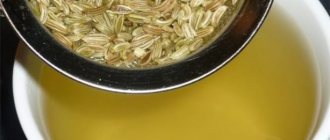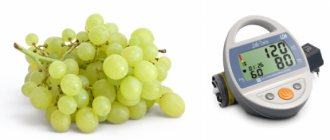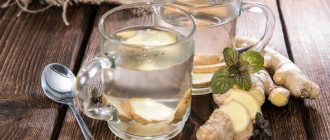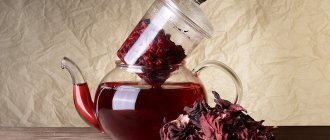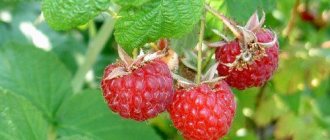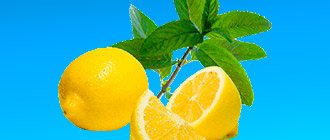The pace of modern life increasingly influences the tone of the human cardiovascular system, causing surges in blood pressure not only in older people, but also in very young people. It is very important to keep this indicator normal, since the consequences of inattention to oneself can be quite severe: stroke or mini-stroke, heart failure, kidney problems.
While following all the recommendations of your doctor, you should not forget about a healthy lifestyle, including in your diet the gifts of nature intended for strengthening and healing. One of these wonderful and healing remedies is the well-known viburnum: a beautiful shrub with clusters of shiny red berries that have a tart-bitter taste.
Composition of Viburnum
Everything in viburnum is useful - from the roots to the berries. The plant is a record holder for ascorbic acid content: 100 g of viburnum pulp and juice contain so much vitamin C that you can meet the daily requirement of an adult not even by 100%, but by 119%. This volume also contains:
- 83% of the average daily requirement of vitamin K, which is responsible for (coagulation) blood clotting,
- 93% Pb, which controls the concentration of hemoglobin in the blood and activates the process of tissue regeneration;
- 60% of iodine that synthesizes thyroid hormones;
- 40% of Fe transporting oxygen molecules into the body;
- 30% activating impulses between nerve cells, promoting the growth of bone tissue Mn;
- 38% of provitamin A, which prevents cardiovascular diseases;
- 29% energy-producing glucose.
And this is only part of the useful substances. The bark contains tannins - hemostatic, anti-inflammatory substances that prevent bleeding. Diuretic phytosterones that help cope with edema and level cholesterol levels. The plant also contains:
- hormonal balance boron;
- molybdenum, which activates the removal of toxins;
- pectin that improves intestinal motility;
- beta-sitosterol, which stimulates immunity and equalizes blood sugar levels.
One plant contains a mass of components necessary to maintain health and normal functioning of the body, especially during periods of immune and arterial failure.
Viburnum in medicine
The unique chemical composition gives viburnum berries healing properties. The wealth of microelements and vitamins contained in the fruits of the crop (manganese, iron, magnesium, potassium, calcium, vitamins C, E, K, P, carotenes, tannins and resins, saccharides, fatty acids) has a positive effect on the cardiovascular system. Viburnum berries are widely used for the preparation of various types of medicinal products by traditional healers, since they have the ability to lower high blood pressure and, accordingly, prevent the development of a heart attack or stroke.
The benefit of consuming viburnum for arterial hypertension is that the fresh berries of the plant have both a sedative and a general health effect.
Viburnum: beneficial properties and applications
The rich biochemical composition of Viburnum opulus L (as the name of the plant sounds in Latin) allows you to successfully use viburnum not only for independent treatment, cosmetology, but also in official pharmacology. Products based on viburnum berries (fresh fruits, ground with sugar or honey, jams, juices, teas and decoctions, fruit drinks):
- equalizes the pulse;
- normalize systole (heart contraction);
- act as an expectorant during attacks of prolonged (“barking” and “dull”) cough, an antipyretic for colds;
- strengthen the protective functions of the body;
- replenish vitamin deficiency;
- cleanse blood vessels, intestines, choleretic ducts from toxins and cholesterol plaques;
- whiten pigment spots;
- minimize acne.
Decoctions and tinctures based on flowers also facilitate the removal of sputum in pulmonary tuberculosis. Helps cope with shortness of breath and stomach pain. They are used to gargle for sore throats (including purulent ones), to combat viral and pathogenic colonies of lemon yellow staphylococci, parasitic sarcina, and anaerobic pseudoanthrax bacilli. Tea, extract from dried viburnum, leaves, bark:
- has a calming effect on the peripheral and central nervous systems;
- acts as a mild and fast-acting antispasmodic;
- accumulates emulsification of maxi fat drops into mini ones with transportation through the intestinal walls;
- tones and minimizes sclerotic changes;
- heals skin eczema and wounds;
- reduces inflammatory processes in the gastrointestinal tract;
- expels helminths;
- has a hemostatic effect;
- to relieve menstrual pain and normalize the cycle;
- to relieve convulsive syndrome;
- acts as a vasoconstrictor for blood pressure.
On a note! Even bones are used - both crushed and whole or ground: for the gentle removal of bile during congestion in the bile ducts, and as a laxative that does not injure the intestines. They are also worth brewing for those who want coffee, but cannot drink it - crushed and brewed seeds can completely replace a tonic drink.
Pharmacological properties
Since ancient times, berries, bark, leaves, flowers and even seeds of this plant have been used for medicinal purposes.
Viburnum fruits have a rich composition:
- 6 acids (ascorbic, chlorogenic, neochlorogenic, caffeic, ursolic, isovaleric);
- carotenoids and flavonoids;
- atocyanins and sugars;
- vitamins P, C, A;
- tannins and pectins;
- amino acids and sitosterol;
- potassium salts.
This set of biologically active substances allows the plant to be used for medicinal purposes in the pharmacotherapeutic group of diaphoretic and anti-inflammatory drugs.
Viburnum berries:
- increase contraction of the heart muscle;
- normalize pulse;
- have a diuretic effect;
- used as an antipyretic for colds and an expectorant for coughs;
- a general tonic for vitamin deficiencies (they are used in vitamin preparations);
- cleansing (remove toxins and reduce cholesterol levels).
Fruits and bark:
- have a calming effect on the central and peripheral nervous system;
- are excellent antispasmodics;
- used as a tonic;
- activate lipid-fat metabolism;
- Due to its astringent property, it promotes wound healing and reduces inflammatory processes in the gastrointestinal tract.
The bark is:
- a drug that enhances uterine contractility;
- an integral part of the collection, which has a hemostatic and vasoconstrictor effect.
It is also used to prevent infectious and allergic reactions for diseases of the skin (decoctions are applied in the form of lotions, bathing children with pseudofurunculosis, in the form of applications for psoriasis).
An infusion of inflorescences (five and ten percent) resists pathogenic microflora and viruses. Particularly sensitive to it:
- sarcina;
- lemon yellow staphylococcus;
- false anthrax bacillus.
Flowers and leaves in the form of decoctions are used to rinse for diseases of the upper respiratory tract.
Viburnum seeds have a tonic and activate lipid-fat metabolism, so they are used as a coffee substitute.
The effect of viburnum on blood pressure
In addition to containing micro- and macroelements, acids, vitamins necessary for normalizing blood composition, cleansing blood vessels, improving the general condition of the cardiovascular system and the body as a whole, the berry also contains essential oils that can affect blood pressure. The main thing is to know for sure: viburnum increases or decreases blood pressure in order to use it correctly.
Official and traditional medicine agree on one opinion - viburnum lowers blood pressure, since taking products prepared from it dilates blood vessels, relieves muscle spasms and smoothly removes fluid. Chronic hypertensive patients need it as a prophylactic means of lowering blood pressure.
Prevention - course application - the central concept: the body must accumulate all useful substances in order to resist attacks. Gradually, in small doses, systematically. Blood thinning occurs gradually, as does increased blood flow due to an increase in the lumen of peripheral vessels. Due to this, the pressure is normalized.
A one-time “horse dose” will not help with advanced stages of the disease and will not improve well-being. And if you take a double or triple portion of viburnum during a hypertensive crisis (“so that it helps immediately and quickly”), harm will be caused to the body. Everything is good on time and in moderation.
Reviews
Expert opinion
Lyudmila
Site reader
I often drink tea with viburnum. I really like its smell and bitter aftertaste. I have known about the benefits of viburnum tea for a long time; I try to consume it during the winter cold to prevent colds. The pressure remains normal.
Expert opinion
Tamara
Site reader
I drink tea with viburnum berries. It invigorates well and raises vitality. Blood pressure is always ideal. Sometimes I brew viburnum itself, but sometimes I alternate it with tea made from currant leaves. By the way, I use the juice and pulp for masks to remove oily skin and lighten freckles.
Expert opinion
Svetlana
Site reader
Since childhood, I remember how viburnum bushes were planted in many neighbors’ yards. They were always pleasing to the eye, and the round red berries helped to cope with colds, coughs, and burning in the throat. I didn’t know that viburnum lowers blood pressure until I read it in the newspaper. I drink a spoonful of alcohol tincture before bed. My blood pressure returned to normal and my sleep became stronger.
Expert opinion
Basil
Reader
I think that it is not at all necessary to immediately run to the pharmacy and pick up a bunch of pills. Now, if in the initial stages of hypertension people were more attentive to their health, there would not be these cosmic pressure surges. Viburnum, valerian and morning exercises are my three companions in the treatment of hypertension.
Expert opinion
Galina
Site reader
Fearing dependence on pills, I give my child only medicinal teas. In our family, hypertension is hereditary. My grandfather began to suffer from pressure changes early on, and my aunt always suffered from headaches. During the entrance exams, due to stress, my teenage son also “jumped.” I hope viburnum will help him calm down and normalize his condition.
Viburnum at low pressure
The effect of the active components of Viburnum opulus L is cumulative. Hypotonic patients who decide to use viburnum in the treatment of ailments - bleeding, cough, fever, colds - should not be afraid of increased blood pressure.
A decrease in blood pressure occurs only if the medication (teas, decoctions, fruit drinks, fresh berry purees) is taken over a course of 1 month or more. A week or two won’t raise your blood pressure, but it will lower your temperature, eliminate vitamin deficiency, and also eliminate the body’s allergic reactions to bacilli. And even if a hypotensive person just wants to enjoy delicious jam, drink herbal tea with viburnum jam, he can completely afford it - without fear that the numbers on the blood pressure monitor will sound the alarm.
To be sure, in order to protect yourself even from the psychologically unmotivated fear of eating/drinking viburnum-based products, the prepared potion can be balanced with fruits and berries that equalize pressure (towards the “+”): ginger, pear, apricot, pomegranate, mishmula. For example, viburnum juice with ginger is very good.
Ingredients:
- purified (filtered, settled for 8-10 hours) water – 3 l;
- red viburnum berries, collected after the first frosts hit - 1.5 tbsp.;
- fresh ginger root – 20 g;
- sugar or honey (hawthorn, with royal jelly, forest, taiga) - to taste.
How to cook:
Rinse the viburnum brushes. Let the water drain. Rub through a sieve. Place the separated juice in the refrigerator for 1-3 hours.
Peel the ginger root, finely chop it with a knife or grate it (the finer the better).
Pour the pulp and sugar (not honey!) with water. Boil. Add ginger chips/crumbs. Remove from heat (there is no need to cook the liquid after boiling!). Cool to 40-50°C. Strain and mix with honey, if used to prepare the drink.
Combine the decoction and chilled juice. Mix. Drink like a regular fruit drink to quench your thirst.
The drink will clean the blood vessels, add elasticity to the walls, remove excess cholesterol, and remove “black spots” from before the eyes.
Viburnum can be safely taken by hypotensive women during menstruation: in case of cycle disruption and severe pain. Viburnum will help with pathologies, minimize the release of blood clots, and tones up a weakened body.
How to take viburnum?
It is important to know!
STILL STRUGGLE WITH ARTERIAL HYPERTENSION INCORRECTLY? The first bioavailable drug with proven effectiveness Read more »
In order for viburnum to give only positive properties, you need to learn how to take it correctly, following all methods and dosages. The berries can be taken in almost any form, but in order for the body to receive as many useful substances as possible, it is best to simply absorb them without processing the viburnum. If this method is not convenient for use, you can prepare special tinctures based on alcohol or tea. You need to take teas in small dosages and as a preventive measure for attacks. In advanced stages and during a hypertensive crisis, it will not be appropriate.
The most effective and efficient way is to eat fresh viburnum fruits with honey. They will help normalize blood pressure and relieve you of unpleasant symptoms during hypertension. In addition, viburnum with honey is an excellent remedy that helps strengthen the body, relieve a person from stressful situations, and relieve all fatigue, which is an excellent option for well-being.
The use of viburnum is not always appropriate; there are situations in which its use is considered prohibited. One of them is breastfeeding.
The use of the medicine in this case should be carried out according to the following rules:
- During breastfeeding, blood pressure can also increase, and in order to normalize it, it is recommended to gradually introduce viburnum berries into your diet, combining them with fruit juice or compote, so as not to cause a sharp reaction in the baby.
- You can drink up to 200 ml of viburnum-based liquid per day.
- If within 24 hours after taking the product the baby does not experience any allergies, you can safely add it to your diet.
- It is best to make teas from viburnum; it is not recommended to take it fresh.
Recommended recipes for high blood pressure
In order for viburnum to bring maximum benefit and for the hypertensive body to receive the required amount of useful and necessary substances, it is necessary to follow a regimen of taking medications based on it: a month of use for a month of rest, cyclic repetition 3-6 times a year.
To enhance the effect of the prepared potions, you can (and even need to) mix and alternate viburnum with such hypotensive plants as yarrow, hawthorn, chamomile, calendula, and motherwort. A duet with honey is also good, especially with linden, angelica, sunflower, may, coriander, and willowherb.
Traditional red berry juice
The juicy fruits of viburnum are the first helpers in relieving attacks of hypertension caused by neurosis, sleep disorders, stress, and depression. They help in a short time. It is useful to eat them in their pure form, grind them with honey and sugar, and swallow them directly with the seeds. But if you don’t like the peculiar bitterness, the slightly astringent taste, you can make a delicious sweet-sour and healthy fruit drink.
When and how to harvest viburnum
The berries can be frozen and used to make medicine, or you can sprinkle them with granulated sugar. This way they will retain their beneficial properties for a long period of time (a year or even more). In addition to berries, foliage, flowers and even the bark of the plant can be harvested for medicinal purposes.
It is necessary to collect viburnum berries after the first frost, as a result of which they largely lose their bitterness and acquire a bitter-sweet taste.
As you can see, the well-known viburnum can eliminate the symptoms of hypertension. Its rich vitamin and mineral composition has a positive effect on the human body in general and on lowering blood pressure in particular. There are more than enough options for preparing medicines using viburnum fruits: it can be aromatic viburnum juice, delicious fruit drink, puree or even viburnum jam.
Caution - contraindications
With all its range of medicinal properties, viburnum is not a panacea for all diseases, even if taken for a strictly allotted time in the recommended dosage and under the supervision of a doctor. Viburnum opulus L is a potent plant and there are a number of contraindications that cannot be ignored. Kalinotherapy should be treated with special caution when:
- pregnancy, so as not to provoke a miscarriage;
- increased acidity – fraught with an attack of gastritis;
- allergies (especially to ascorbic acid) - the reaction can be pathetic, up to Angioedema;
- stomach and intestinal ulcers - during exacerbation of diseases;
- gout and kidney failure - the purines contained in them, which cause a strong diuretic effect, can provoke uric acid, which is dangerous for joint ailments and urolithiasis;
- thrombosis and increased blood clotting - a large percentage of vitamin K, which is part of the biochemical composition of the plant, produces blood viscosity, tannins (they cause the astringency of the berries), like rutin, increase clotting.
The benefits of the plant can only be obtained by mixing it with natural equalizing components and after professional medical consultation.
Contraindications
Despite the impressive list of benefits of viburnum berries, they need to be consumed wisely, and before starting treatment, you need to familiarize yourself with the contraindications and the list of categories of people who can be harmed by viburnum medicines.
- So, the berries of the crop are strictly contraindicated:
- pregnant women;
- for allergy sufferers;
- hypotensive patients;
- those suffering from kidney diseases;
- people with an increased tendency to form blood clots;
- patients with ulcers, gastritis or ulcerations of the gastrointestinal system;
- suffering from gout.
If you have at least one contraindication, the fruits of the crop are not a medicine for you.
Harvesting and storage of viburnum
In order for viburnum to bring the expected benefits and retain the maximum, or better yet, all the beneficial properties, it is necessary to correctly prepare the parts of the plant used in recipes.
The berry retains its pristine freshness (provided that the fruits were collected without damage) for a month - in the refrigerator. It can also be frozen, dried, or “sealed” with sugar/honey.
- Freezing is the easiest thing. Collect, sort and dry the berries. Place them in plastic containers or plastic bags, pack them in portions in cling film and put them in the freezer.
- Drying will ensure a long shelf life - up to 4 years. For harvesting you need transparent, absolutely ripe berries. Rinse. Separate from the inflorescence. Remove moisture (blot with a napkin). Place on a wire rack/mesh lined with parchment paper in one layer. Dry outdoors, in the shade, in a draft, covering with gauze to prevent flies. A good method of drying is in an electric dryer. You can - in the oven with the door ajar (a must!) - at a temperature of 50°C. Dry not until it becomes crackers, but until the berries have a wrinkled, “shaved” appearance. Then place them in wooden/tin/cardboard boxes, glass containers, or linen bags. Store in a dry place, shake occasionally, stir the drying mixture.
- A useful and affordable way is to grind it with honey. Pour boiling water over the washed berries and puree them. Mix with an equal amount of honey. Pour into sterile jars. Place in the refrigerator. Store under a screw-on lid (ideally a waxed one).
- “Seal” with sugar. Rinse the berries. Dry. Sprinkle with sugar, pouring a large ball of sugar on top. Use the released juice for drinking.
You can wilt the berries in clusters. Rinse. Allow the water to drain completely. Tie into bundles. Hang under a ceiling beam in a cool veranda, attic, or basement. Use as needed.
For decoctions, viburnum bark must be collected at the time of sap flow. Use a knife to pick up the top layer of 0.5-1 mm from the trunk and branches. Rip off. Cut into layers 10-25 cm long. Rinse. Dry in the open air (in the shade) or on the windowsill (choose the side where the sunlight is diffused). Then dry in the oven or in an electric dryer in the same way as berries, or even better - on the bed of a country stove. Grind in a coffee grinder.
Normalize blood pressure using red berries
How to prepare berries for treatment of high blood pressure?
Procurement for storage
Viburnum berries turn red already at the end of August - beginning of September, but they are not yet ready for picking at this time. The fruits at this time have a tart, bitter taste and have an astringent aftertaste. It is recommended to pick them only after the first frost has struck. “Frozen” berries lose their bitterness, they acquire a pleasant sweetness and delicate softness.
To collect berries you need a special approach:
- dry weather outside (to prevent rapid spoilage, which is possible during further storage of wet fruits);
- carefully cutting the berries along with the tassels (so that they fall off less);
- carefully fold into a dry, clean container.
Proper storage involves several methods.
| № | Way | What do we have to do |
| 1. | Fresh |
|
| 2. | Freezing |
|
| 3. | Drying |
|
Tea
There are several simple recipes for preparing this surprisingly pleasant drink. Here are some of them.
- Viburnum tea based on green tea. To do this, you need to brew your favorite green tea in the usual way. Add to it separately washed and mashed viburnum berries (2 tablespoons). Let the drug brew for ten minutes. Enjoy excellent taste properties (and also lower your pressure levels down several positions ).
- Tea drink made from viburnum. Place 2-3 tablespoons of berries in a cup, add sugar to taste, grind the fruits so that they release juice. Pour a glass of boiling water. Let it brew for a minute or two and drink the aromatic drink with pleasure.
And also read on our website: Does red rowan increase or decrease blood pressure?
Tinctures
In order to prepare a medicinal product from viburnum based on “classic alcohol”, two main ingredients are needed:
- viburnum (berries) - 1.5 kg;
- vodka - 1.5 l.
Ten-step cooking technology:
- We carefully sort the berries, removing small twigs and stuck leaves.
- We rinse several times in a container with water, finishing with a “shower” of running water.
- Dry on a clean napkin or cotton towel.
- Transfer the viburnum to a glass container, filling it halfway.
- Pour vodka so that it completely covers the red fruits.
- Close the container with a tight-fitting lid.
- Place in a warm place.
- After 24 hours, take out the viburnum tincture and pour in the rest of the alcohol.
- We return the container to its original place, where it will infuse for another month.
- After the specified period, filter the drink and the tincture is ready for use.
Self-prepared viburnum tincture with vodka should be taken at high blood pressure three times a day before meals, a tablespoon in half a glass of water for 3-4 weeks until the condition improves.
Recipe with honey
To prepare this remedy, do this:
- We sort out 2 kg of viburnum.
- Wash and dry the berries.
- Place the prepared raw materials in a large jar.
- Add half a liter of good cognac.
- Add half a kilogram of natural honey.
- Pour in 1.5 liters of boiled chilled water.
- Close with a tight lid.
- Place in a cool, dark place.
- After 1.5 months, the drink is filtered and bottled.
To normalize blood pressure levels, we take 1 tablespoon during meals three times a day. The drink also has a general strengthening tonic effect, relieves spasms, eliminates headaches, reduces swelling in case of kidney and heart disorders, improves digestion in case of gastritis with low acidity.
A drink prepared in this way has a long shelf life, since honey and cognac are excellent preservatives.
We talked about viburnum tincture with the addition of honey, but this useful ingredient can be added to viburnum tea, making it even more healing. Please note that viburnum with honey in the second option can be given even to small children, as well as adolescents during age-related surges in blood pressure (with a tendency to increase it).
And also read on our website about St. John's wort and green tea to stabilize blood pressure?
Contraindications to the use of red viburnum
The healthy berry has the following contraindications:
- breast-feeding;
- stone disease of the genitourinary system;
- pregnancy;
- diseases of the digestive system;
- presence of thrombosis.
Important! Take viburnum products only after consulting a doctor.
To avoid an allergic reaction, viburnum is consumed first in small quantities (a glass of tea or fruit drink). In the absence of any negative reaction to the body, use the useful plant without fear.
Rules for using viburnum
To get the maximum benefit from viburnum treatment, you need to know the rules for preparing and storing the ingredient. To preserve all the properties and benefits, it is necessary to store viburnum fruits in this form:
- Freeze.
- Grind with sugar.
- Dry.
- Combine with honey.
Often, viburnum is used for hypertension as a fruit drink, tea or decoction. You can also eat fresh fruits, 1 tbsp. per day to reduce indicators. In addition to berries, you can use viburnum bark to normalize the condition. A decoction is made from it, which is consumed in a course of 1 month, 100 ml 3 times a day. To prepare, you need to chop the bark and add 1 tbsp. add 500 ml water. Bring to simmer over low heat, then leave to steep in a thermos for about 2-3 hours.
Procurement rules
To preserve the beneficial qualities of the collected raw materials, you should adhere to the harvesting rules.
The instructions are quite simple:
- berries need to be picked from the bush in mid-autumn, immediately after the first frost (if earlier, a number of beneficial properties are lost);
- do not separate the fruits from the branches, i.e. cut off the bunch;
- dry on a flat surface for about 10 days in a ventilated and dry place;
- Before storage, you can dry them in an oven heated to no higher than 50 degrees.
After this, the berries are ready for long-term storage. It is better to hang the bunches or put them in bags made of natural “breathable” fabric and store them in a dark, dry place.
Please note that viburnum bark should be harvested in April, and shoots in early spring. It is better to collect leaves during the period of mass flowering of the bush.
